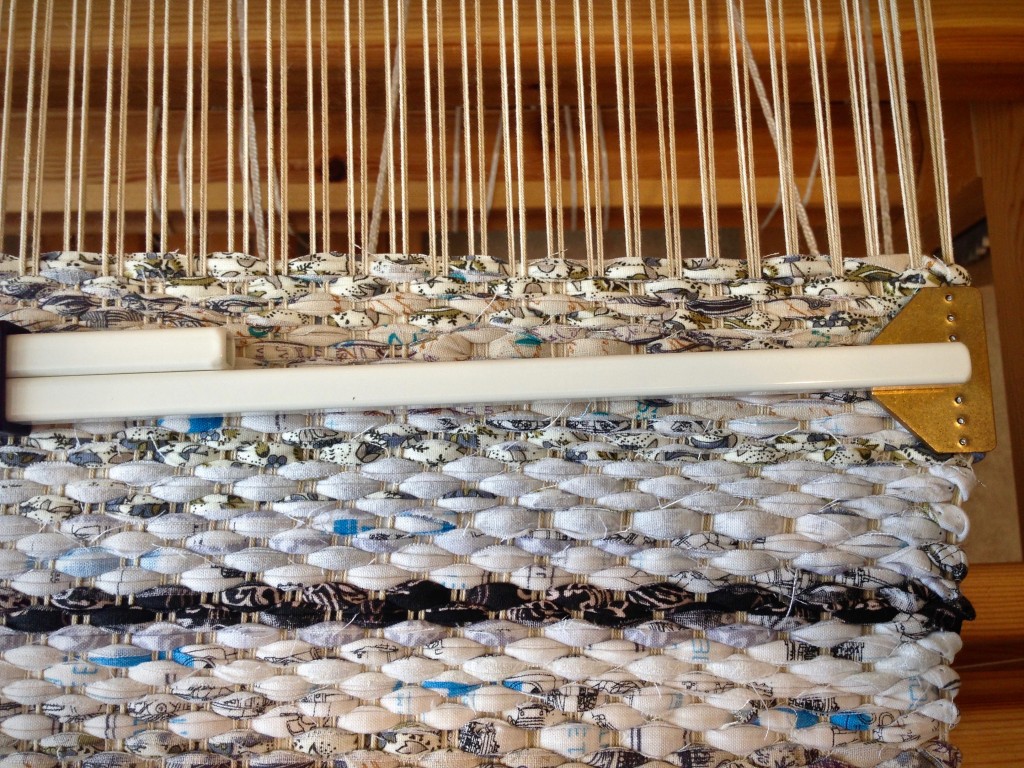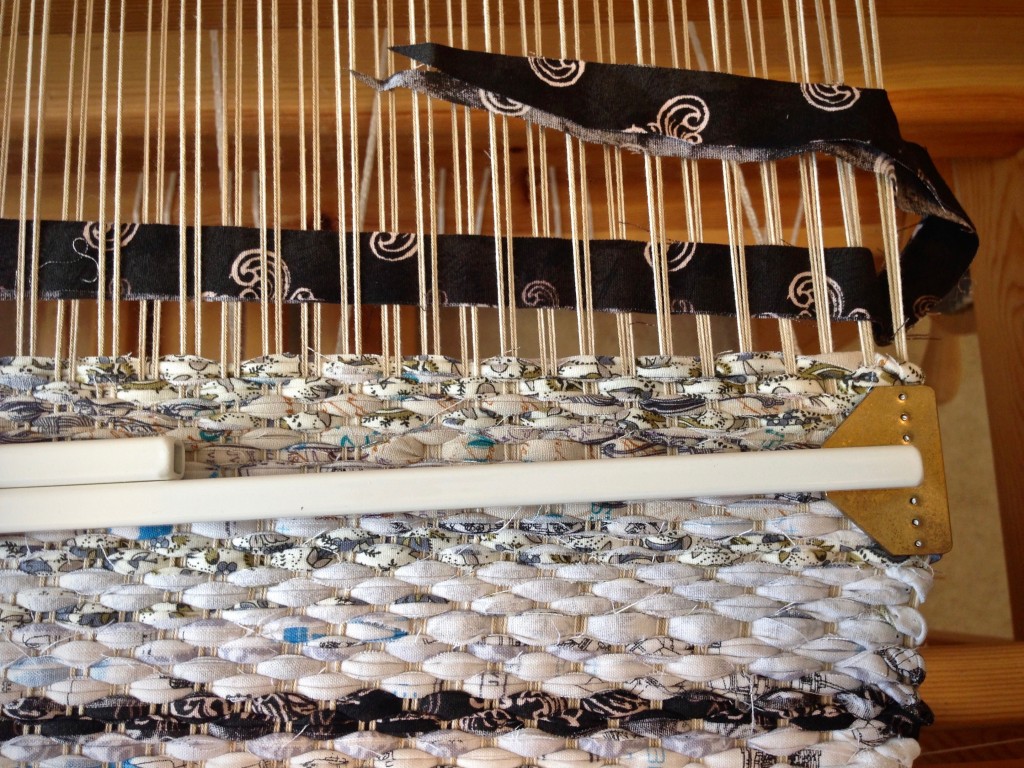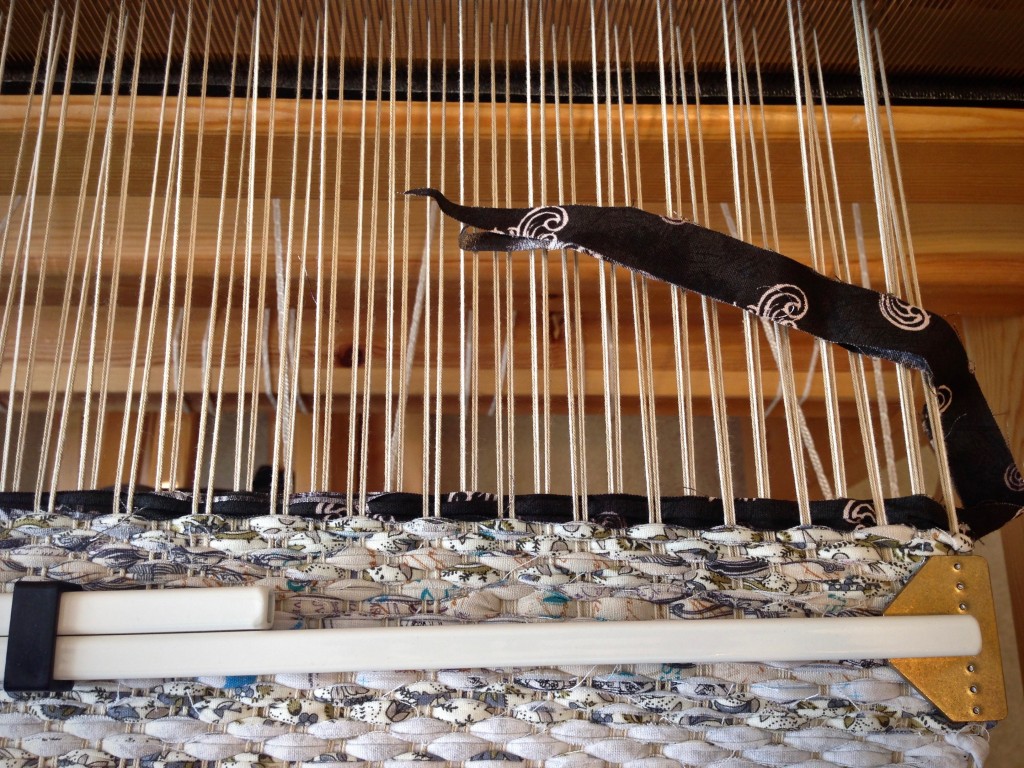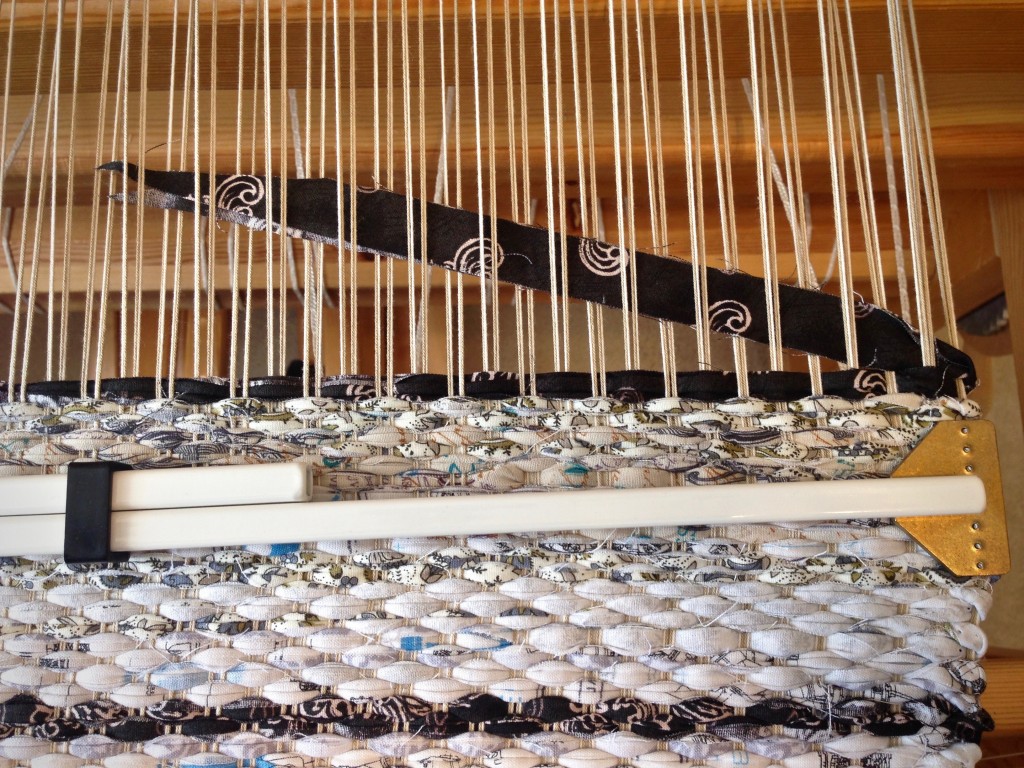An isolated thin weft stripe makes a bold statement. One simple technique greatly improves the efficiency of weaving such a stripe in a rag rug. This method eliminates the need to weave weft tails in at the beginning and end of the stripe. So, besides being efficient, the selvedges look better too.
How to Weave a Thin Weft Stripe (Two Picks)
1 Weave up to the stripe placement. No need to end the weft if the same weft will continue after the thin stripe.
2 Place the first pick of the stripe in the shed, leaving a long tail of about 6 inches / 15 cm, or more.
3 Beat in the first pick of the stripe.
4 Change sheds. Lay the long tail into the new shed.
5 Send the shuttle across for the second pick, catching the previous weft to carry it up the selvedge.
6 As the weft goes across for the second pick, bring the shuttle all the way out.
7 Pull enough of the second pick through the warp to cut a tapered edge that will overlap the tapered edge of the long tail.
8 Overlap the two tapered fabric strips in the shed.
9 Beat in the second pick of the stripe.
10 Continue weaving with the previous weft that was carried up the selvedge.
If you’re like me, you are always on the lookout for ways to enhance weaving efficiency. One little tip can improve the whole weaving experience. When you know there is so much more to learn, and you are hungry to learn, every morsel of insight is delectable.
Has your soul ever felt hungry? Mine has. The Lord is ready to fill the hungry soul with good. He fills the empty. He satisfies the hungry, meeting the deepest need. One sweet morsel leads to another, inviting us to keep coming back. Taste and see that the Lord is good.
May you be hungry for good things.
Satisfied,
Karen











What a clever idea! Thanks so much for sharing. Too bad I can’t put a rug warp on today and cement this idea in my brain. Blessings.
Hi Ruth, this technique works equally well with thread or yarn for any two-pick stripe. I’ve done it this way for thin weft stripes in towels and throws, too. So, go ahead and try it out on your next project!
Happy weaving,
Karen
That’s a great technique! And as I am weaving rag runner/placemats I will try it. I see I need to read more of your blog, but a quick question – is your threading 11223344 – and if so, is the reason for the pattern or something else? I generally do just a tabby.
Hi Debbie, I’m glad you have a project going that you can try this with.
The threading is 1234, with 2 ends per heddle and 2 ends per dent. Technically, it is supposed to be weft rep, but I was not able to completely cover my warp, as true weft rep should be. But the weft rep effect is what makes the rickrack zigzag more prominent than it would be with just tabby. Most weft-faced weaving will produce a wavy line with 2 picks, as in tapestry weaving.
Happy weaving,
Karen
Great technique! I’m going to try it. May I ask you a few questions please?
What tool are you using to send your weft through your shed and how many ends per inch do you use for this rug? My last rug ended up being warp faced! That’s not what I wanted. I used the same threading set up as you and I did two thread per dent and heddle but I had way to many threads per inch.
Hi Kathryn, I use a Glimakra ski shuttle to send my weft through the shed.
The draft for this rug is in The Big Book of Weaving, p.144. The ends per inch for this rug is about 6.5 double ends per inch, or 2 1/2 doubled ends per cm.
Most of my rag rugs are sett at 8 ends per inch/ 3 ends per cm.
I hope this is helpful to you.
Karen